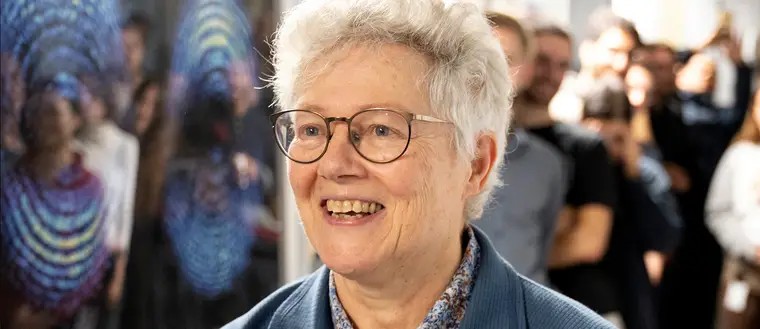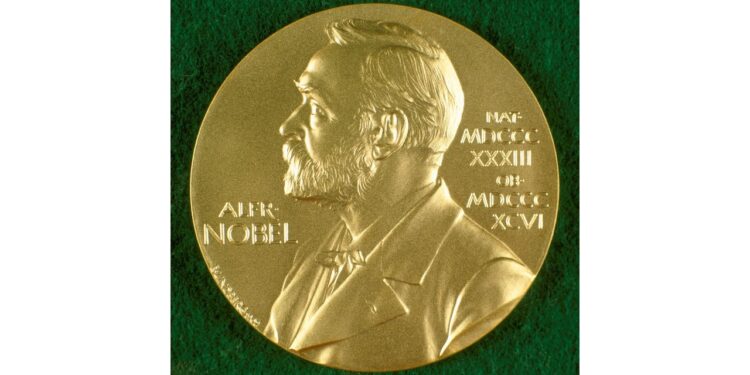The three Nobel Laureates in Physics 2023 are being recognised for their experiments, which have given humanity new tools for exploring the world of electrons inside atoms and molecules. Pierre Agostini, Ferenc Krausz and Anne L’Huillier have demonstrated a way to create extremely short pulses of light that can be used to measure the rapid processes in which electrons move or change energy.
Fast-moving events flow into each other when perceived by humans, just like a film that consists of still images is perceived as continual movement. If we want to investigate really brief events, we need special technology. In the world of electrons, changes occur in a few tenths of an attosecond – an attosecond is so short that there are as many in one second as there have been seconds since the birth of the universe.
The laureates’ experiments have produced pulses of light so short that they are measured in attoseconds, thus demonstrating that these pulses can be used to provide images of processes inside atoms and molecules.
Pierre Agostini. PhD 1968 from Aix-Marseille University, France. Professor at The Ohio State University, Columbus, USA.
Ferenc Krausz, born 1962 in Mór, Hungary. PhD 1991 from Vienna University of Technology, Austria. Director at Max Planck Institute of Quantum Optics, Garching and Professor at Ludwig-Maximilians-Universität München, Germany.
Anne L’Huillier, born 1958 in Paris, France. PhD 1986 from University Pierre and Marie Curie, Paris, France. Professor at Lund University, Sweden.

Prize amount: 11 million Swedish kronor, to be shared equally between the laureates.
In 1987, Anne L’Huillier discovered that many different overtones of light arose when she transmitted infrared laser light through a noble gas. Each overtone is a light wave with a given number of cycles for each cycle in the laser light. They are caused by the laser light interacting with atoms in the gas; it gives some electrons extra energy that is then emitted as light. Anne L’Huillier has continued to explore this phenomenon, laying the ground for subsequent breakthroughs.
In 2001, Pierre Agostini succeeded in producing and investigating a series of consecutive light pulses, in which each pulse lasted just 250 attoseconds. At the same time, Ferenc Krausz was working with another type of experiment, one that made it possible to isolate a single light pulse that lasted 650 attoseconds.
The laureates’ contributions have enabled the investigation of processes that are so rapid they were previously impossible to follow.
“We can now open the door to the world of electrons. Attosecond physics gives us the opportunity to understand mechanisms that are governed by electrons. The next step will be utilising them,” says Eva Olsson, Chair of the Nobel Committee for Physics.
There are potential applications in many different areas. In electronics, for example, it is important to understand and control how electrons behave in a material. Attosecond pulses can also be used to identify different molecules, such as in medical diagnostics.
The Nobel Prize in Physics is one of the most prestigious awards in the scientific community, recognizing outstanding contributions to the field of physics. Established by the will of Alfred Nobel, the inventor of dynamite, this annual award has been given out since 1901. It honors individuals or groups who have made groundbreaking discoveries or significant advancements in the realm of physics.
Each year, the Nobel Prize in Physics highlights the diverse and ever-evolving nature of the field. From the discovery of fundamental particles like the Higgs boson to breakthroughs in quantum mechanics and astrophysics, laureates have reshaped our understanding of the universe.
The selection process for the Nobel Prize in Physics is rigorous, with nominations coming from experts in the field worldwide. The Royal Swedish Academy of Sciences evaluates these nominations and ultimately decides the winners. The recipients not only receive international recognition but also a medal, diploma, and a substantial monetary award.
The Nobel Prize in Physics not only celebrates the brilliance of the laureates but also underscores the importance of scientific discovery and innovation in our society. It continues to inspire generations of physicists to push the boundaries of knowledge, paving the way for technological advancements that shape our world.
116 Nobel Prizes in Physics have been awarded between since 1901.
47 physics prizes have been given to one laureate only.
4 women have been awarded the physics prize so far: Marie Curie in 1903, Maria Goeppert-Mayer in 1963, Donna Strickland in 2018 and Andrea Ghez in 2020.
1 person, John Bardeen, has been awarded the physics prize twice.
25 years was the age of the youngest physics laureate ever, Lawrence Bragg, when he was awarded the 1915 physics prize together with his father.
96 years was the age of the oldest physics laureate, Arthur Ashkin.











Recent Comments